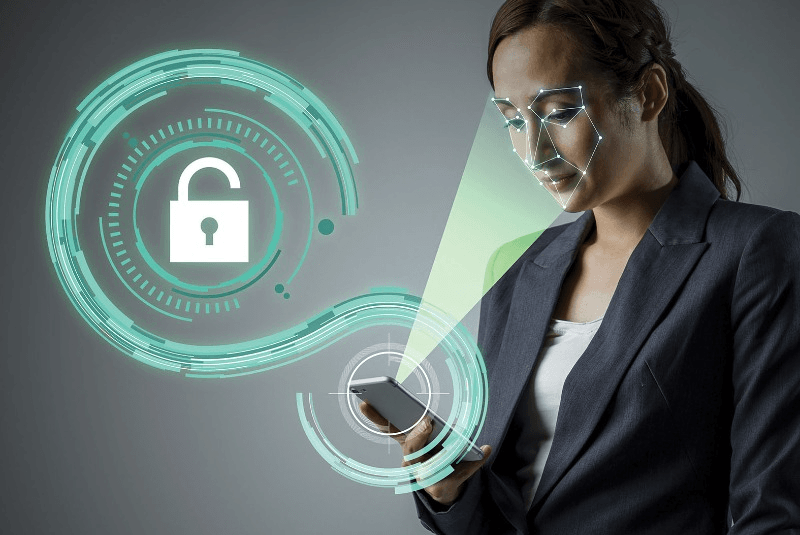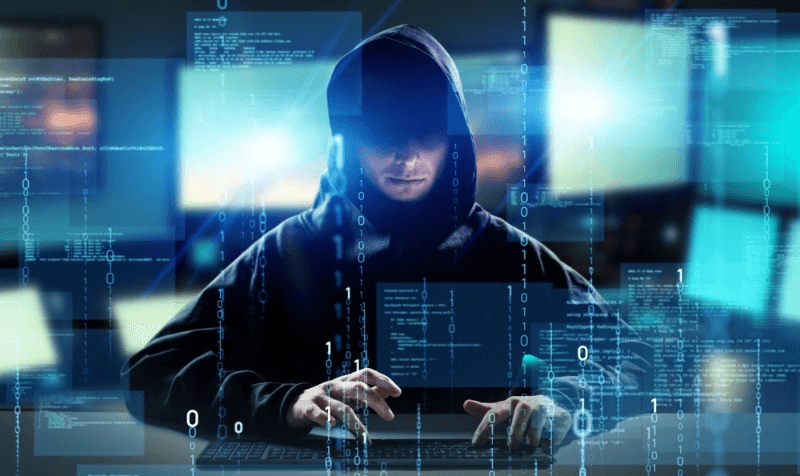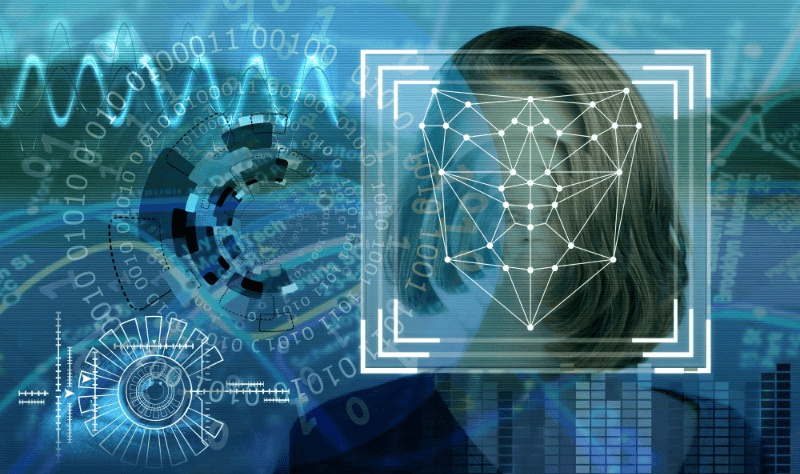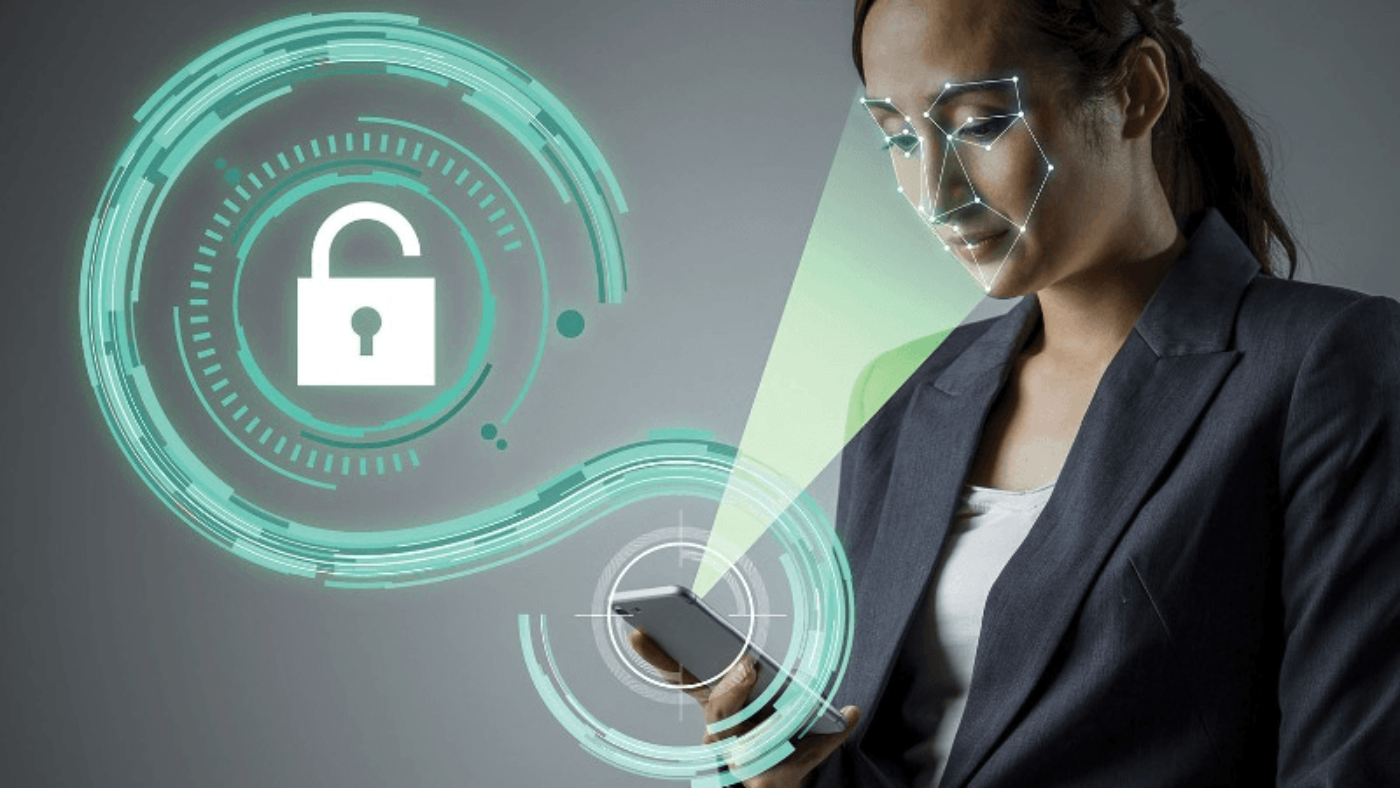Did you know that facial recognition technology is not foolproof? In fact, it can be easily deceived by spoof attempts, putting sensitive information at risk. That’s where 3D face liveness detection comes into play.
Liveness detection is a cutting-edge technology that analyzes facial cues and movements to determine if a user is physically present or if it’s an imposter trying to gain unauthorized access. It plays a crucial role in verifying the authenticity of users during online transactions and identity verification processes, adding an extra layer of security.
We’ll delve into how this technology distinguishes between live users and fake identities, preventing fraudulent activities such as identity theft and account takeovers.
Fundamentals of 3D Face Liveness Detection
How It Works
3D face liveness detection is a sophisticated technology that utilizes advanced techniques like depth sensors and cameras to capture facial data. These devices enable the system to gather information about the unique facial features, movements, and depth perception of an individual. By analyzing this data, the system can determine whether the user is genuine or attempting to deceive it.
To authenticate a user’s identity, 3D face liveness detection compares real-time facial data with stored patterns. This comparison allows the system to identify any discrepancies that may indicate a spoofing attempt. By leveraging the power of three-dimensional imaging, this technology offers enhanced security in identity verification processes.
Passive vs. Active Methods
There are two primary approaches: passive and active methods.
Passive liveness detection involves analyzing pre-recorded images or videos of an individual’s face. While this method may seem convenient, it can be vulnerable to attacks as fraudsters could potentially use high-quality masks or even manipulated media to deceive the system.
On the other hand, active methods require real-time interaction with the user during authentication. These methods typically involve asking users to perform specific actions or gestures that are difficult for fraudsters to replicate accurately. Active methods provide an additional layer of security by ensuring the presence of a live person during the authentication process.
Depth Perception
Depth perception plays a crucial role in 3D face liveness detection as it enables accurate analysis of facial structures. Depth sensors measure the distance between different points on a person’s face, providing valuable information for authentication purposes.
By incorporating depth perception into the analysis process, 3D face liveness detection can differentiate between a flat image or mask and a real three-dimensional human face. This capability significantly enhances security by making it more challenging for fraudsters to impersonate someone else using static images or replicas.
Motion Analysis
Motion analysis is another essential component of 3D face liveness detection. By tracking facial movements and gestures, this technology can verify the liveness of a user.
Sophisticated algorithms assess various factors such as blinking, head rotation, and eye movement to determine whether the observed behavior is consistent with that of a live person. This dynamic analysis makes it extremely difficult for fraudsters to mimic natural facial motions accurately.
Technologies Behind Liveness Detection
Algorithms and AI
Sophisticated algorithms and artificial intelligence (AI) play a crucial role in 3D face liveness detection systems. These advanced technologies enable the system to accurately distinguish between live users and fraudulent attempts.
By leveraging vast datasets, these algorithms learn to identify patterns associated with genuine human faces. They analyze various factors such as facial movements, eye blinks, head rotations, and other subtle cues that indicate liveness. As the system continues to process more data, it becomes increasingly adept at identifying authentic users.
The integration of AI further enhances the accuracy and effectiveness of liveness detection over time. The AI component continuously learns from new data inputs and adapts its algorithms accordingly. This iterative learning process enables the system to stay ahead of evolving fraud techniques and consistently improve its ability to detect fake identities.
Face Matching Integration
To ensure robust security, 3D face liveness detection can be seamlessly integrated with face matching technology. This combination provides a two-fold authentication process by verifying both liveness and identity.
Once the system verifies the user’s liveness through sophisticated algorithms, it proceeds to compare the captured facial data with stored templates using face matching technology. By analyzing key facial features such as the shape of the eyes, nose, mouth, and overall facial structure, it determines if there is a match between the captured image and the stored template.
This integration significantly reduces the risk of fraudulent activities by ensuring that only genuine users are granted access. It adds an extra layer of security by combining liveness detection with identity verification.
Challenges in Liveness Detection
Deepfake Advancements
The rapid advancement of deepfake technology has brought about significant challenges for liveness detection systems. Deepfakes refer to AI-generated videos or images that can convincingly mimic real people and make it difficult to distinguish between genuine and fake identities. These sophisticated fakes can be created with such precision that they can fool even the most vigilant security measures.
Fraudsters leverage deepfakes to bypass liveness detection systems, posing a serious threat to security. By using AI algorithms, they can create realistic videos or images of individuals who don’t exist or impersonate real people. This makes it challenging for traditional liveness detection techniques to differentiate between genuine users and fraudsters.
To combat this issue, continuous advancements are being made in liveness detection technology. Researchers and developers are constantly working on improving algorithms and techniques to stay ahead of deepfake advancements. By analyzing subtle facial movements, micro-expressions, and other physiological cues, these advanced systems aim to detect signs of artificiality in real-time.
Continuous Improvement Needs
Liveness detection systems require ongoing improvement and adaptation due to the ever-evolving nature of fraud techniques. As fraudsters become more sophisticated in their methods, it is essential for security measures to keep pace with these advancements.
Regular updates and enhancements are crucial for countering emerging threats effectively. Developers need to collaborate with researchers and industry experts to identify new vulnerabilities and devise robust solutions accordingly. By sharing knowledge and expertise, they can collectively work towards strengthening liveness detection systems against evolving fraud techniques.
Continuous improvement also involves leveraging machine learning algorithms that learn from new data patterns over time. By training these algorithms with large datasets containing both genuine samples and known deepfakes, the system becomes more adept at identifying anomalies accurately.
Moreover, incorporating multi-factor authentication methods alongside liveness detection adds an extra layer of security. Combining facial recognition with other biometric factors such as fingerprints or voice recognition can significantly enhance the overall security posture.
Biometric Best Practices
Ensuring Real User Security
Liveness detection plays a crucial role in ensuring the security of real users. By implementing liveness detection, service providers can verify that only genuine individuals gain access to sensitive information or perform transactions. This not only protects user privacy but also reduces the risk of financial losses due to fraudulent activities.
Unauthorized access is a significant concern in today’s digital landscape, and liveness detection acts as a powerful deterrent against such threats. By incorporating this technology, service providers instill confidence in their users regarding the robust security measures implemented. Users can trust that their personal information and transactions are safeguarded from unauthorized access.
Liveness detection adds an extra layer of complexity for bad actors attempting to exploit online systems. It poses significant challenges for fraudsters who engage in spoofing attempts by using fake biometric data or images. The advanced algorithms used in liveness detection make it increasingly difficult for them to succeed.
Imagine a scenario where someone tries to use a photograph or an artificial representation of another person’s face to gain unauthorized access. Liveness detection analyzes various facial features and movements, such as blinking, head rotation, and facial expressions, to determine if the presented face is indeed live and authentic. This process ensures that only real users are granted access while thwarting the efforts of potential fraudsters.
By effectively preventing spoofing attempts, liveness detection contributes significantly to maintaining a secure online environment. It helps protect both individuals and organizations from potential harm caused by identity theft or financial fraud. Service providers can rely on this technology as an essential component of their overall security strategy.
In addition to its security benefits, liveness detection also enhances user experience by providing seamless authentication processes. Users appreciate the ease with which they can prove their identity without having to remember complex passwords or go through lengthy verification procedures. With just a simple scan or selfie, they can securely access their accounts or perform transactions.
Camera Security Role
Importance in Detection
Liveness detection plays a crucial role in ensuring camera security. It provides an additional layer of defense against various types of fraud, including identity theft and account takeovers. By identifying fake identities or synthetic faces, it helps protect individuals and organizations from financial losses and reputational damage.
In today’s digital age, where online transactions and interactions have become the norm, ensuring the authenticity of individuals is paramount. Traditional security measures such as passwords and PINs are no longer sufficient to prevent sophisticated attacks. Hackers have found ways to bypass these measures through techniques like spoofing or using stolen credentials.
This is where liveness detection comes into play. By leveraging advanced algorithms and artificial intelligence, it can analyze facial features captured by a camera to determine if the person being authenticated is physically present or if they are using a manipulated image or video. This technology can detect subtle cues that indicate liveness, such as blinking, facial movements, and changes in skin texture.
The importance of liveness detection becomes evident when we consider the potential consequences of fraudulent activities. Identity theft can lead to significant financial losses for individuals who fall victim to such scams. Moreover, organizations can suffer reputational damage if their security systems fail to detect fraudulent attempts.
One example where liveness detection proves invaluable is in preventing account takeovers in banking applications. Cybercriminals often attempt to gain unauthorized access by using stolen credentials or creating synthetic identities with fabricated biometric data. Liveness detection helps identify these fraudulent attempts by distinguishing between real users and impostors.
Another area where liveness detection is vital is in e-commerce platforms that rely on facial recognition for secure transactions. By verifying the authenticity of customers’ faces during payment processes, it ensures that only legitimate users can complete transactions, protecting both buyers and sellers from fraud.
Furthermore, liveness detection also aids law enforcement agencies in investigations involving digital evidence. It helps determine whether images or videos submitted as evidence are genuine or if they have been tampered with to mislead investigators.
User Onboarding and Authentication
Liveness in Onboarding
Liveness detection is a crucial aspect of the user onboarding process for digital platforms. It ensures that only legitimate users are granted access to services, effectively preventing the creation of fraudulent accounts. By verifying liveness at the initial stage, potential risks can be mitigated, providing a secure environment for both users and service providers.
During user onboarding, individuals are required to provide personal information and credentials to create an account. However, relying solely on this information may not be sufficient to guarantee the authenticity of the user. This is where liveness detection comes into play. It utilizes advanced technologies such as 3D face recognition to verify that the person creating the account is physically present and alive.
By analyzing facial movements, liveness detection algorithms can differentiate between a live person and a static image or video playback. These algorithms measure various factors such as eye blinking, head movement, and facial expressions to ensure that the user is actively participating in the authentication process.
Implementing liveness detection during onboarding offers several benefits. Firstly, it enhances security by reducing the risk of identity theft or impersonation. Fraudsters often rely on stolen identities or fabricated credentials to gain unauthorized access to digital platforms. Liveness detection acts as an effective deterrent against these malicious activities.
Secondly, it improves user experience by streamlining the registration process. Traditional methods of identity verification often involve manual checks or additional documentation requirements, leading to lengthy and cumbersome procedures. With liveness detection technology integrated into onboarding processes, users can quickly complete their registration without unnecessary delays or inconvenience.
Step-Up Authentication
Step-up authentication refers to additional security measures triggered when a higher level of assurance is required for specific transactions or activities. Liveness detection serves as an effective step-up authentication method by confirming the presence of a live user during critical interactions.
In certain scenarios where sensitive transactions take place—such as financial transfers, accessing confidential information, or authorizing high-value actions—additional security measures are necessary to ensure the integrity of the process. By incorporating liveness detection as part of step-up authentication, digital platforms can add an extra layer of protection against unauthorized access or fraudulent activities.
For instance, when a user attempts to transfer a large sum of money from their account, the system may prompt them to undergo liveness detection to confirm their identity and prevent potential fraud. This ensures that even if someone gains unauthorized access to the user’s login credentials, they would not be able to complete the transaction without physically proving their presence.
Use Cases of Face Liveness Detection
Real-World Applications
3D face liveness detection technology has found its way into various industries, including banking, e-commerce, and healthcare. Its ability to verify the authenticity of a user’s face in real-time has made it an invaluable tool for ensuring secure online transactions and preventing unauthorized access to personal information.
In the banking sector, face liveness detection is being used to enhance the security of digital
3d liveness detection
banking services. By implementing this technology, banks can verify the identity of their customers during online transactions or when accessing sensitive financial information. This helps protect against fraud and ensures that only authorized individuals have access to their accounts. With the rise of mobile banking apps, integrating 3D face liveness detection into these platforms provides an extra layer of security for users.
E-commerce platforms are also leveraging face liveness detection to combat identity theft and improve customer trust. By verifying the live presence of a user through facial recognition, these platforms can prevent fraudulent activities such as account takeovers or fake reviews. This not only protects consumers but also safeguards the reputation of businesses by ensuring that genuine interactions occur on their platforms.
In the healthcare industry, where patient data privacy is paramount, 3D face liveness detection plays a crucial role in securing electronic health records (EHRs) and other sensitive medical information. By confirming that only authorized individuals are accessing patient data through facial recognition, healthcare providers can protect against unauthorized access or data breaches. This technology can be integrated into electronic medical record systems or telemedicine platforms to ensure secure communication between healthcare professionals and patients.
The versatility of 3D face liveness detection allows it to be seamlessly integrated into different platforms and devices. Whether it is implemented in smartphones, tablets, laptops, or even kiosks at physical locations like airports or government offices, this technology provides a consistent level of security across multiple touchpoints.
Amazon Rekognition for Liveness
Real and Live User Detection
3D face liveness detection plays a vital role in distinguishing between real users and fake identities attempting to deceive the system. It goes beyond simply verifying the presence of a human face; it also confirms that the face belongs to a live person. This dual verification process significantly enhances security measures and reduces the risk of impersonation or fraud.
By incorporating 3D face liveness detection, digital systems can ensure that only genuine individuals are granted access. This technology analyzes various facial features, such as eye movement, blinking, and other micro-expressions, to determine if a person is physically present and responsive. For instance, it can detect if someone is trying to use a photograph or video of another person’s face in an attempt to bypass security measures.
The ability to differentiate between real and fake identities is crucial in scenarios where high-security standards are required. It prevents unauthorized access by imposters who may try to gain entry using stolen credentials or fabricated identities. With 3D face liveness detection, organizations can strengthen their defenses against malicious actors seeking to exploit vulnerabilities in identity verification processes.
Identity Verification Process
Liveness detection forms an integral part of the identity verification process within digital systems. By ensuring that the individual behind the screen is genuine, it minimizes the chances of identity theft or account compromise. Traditional methods of identity verification often rely solely on static information like passwords or identification documents, which can be easily forged or stolen.
Integrating 3D face liveness detection into identity verification procedures enhances overall accuracy and reliability. It adds an additional layer of security by confirming that the user is physically present during authentication attempts. This helps prevent unauthorized access even if someone manages to obtain valid login credentials through illicit means.
Furthermore, combining 3D face liveness detection with other biometric factors such as fingerprint recognition or voice authentication creates a multi-factor authentication system. This multi-layered approach significantly strengthens the security of digital systems, making it more difficult for unauthorized individuals to gain access.
Conclusion
So, there you have it! We’ve explored the fascinating world of 3D face liveness detection, from understanding its fundamentals to diving into the technologies behind it. We’ve discussed the challenges involved and explored best practices for biometric authentication. We’ve also examined the crucial role of camera security and how user onboarding and authentication play a significant part in ensuring the effectiveness of this technology.
Now that you have a solid understanding of 3D face liveness detection, it’s time to put this knowledge into action. Consider implementing this technology in your organization’s security systems to enhance authentication and protect against fraud. Stay ahead of the game by embracing the power of facial recognition and liveness detection, and ensure a safer and more secure future for your business.
Remember, technology is ever-evolving, so keep exploring, learning, and adapting to stay at the forefront of innovation. Together, we can build a world where security is robust, seamless, and accessible to all. Stay vigilant and embrace the power of 3D face liveness detection!
Frequently Asked Questions
How does 3D face liveness detection work?
3D face liveness detection uses advanced algorithms to analyze facial movements and depth information to determine if the face being presented is from a live person or a spoofed image. It assesses factors such as eye blinking, head rotation, and texture changes to ensure the authenticity of the user.
Why is liveness detection important in biometrics?
Liveness detection is crucial in biometrics because it helps prevent fraudulent activities such as identity theft and unauthorized access. By verifying that the individual presenting their face is physically present and not using a manipulated image, it enhances the security and accuracy of biometric authentication systems.
What are the challenges in implementing 3D face liveness detection?
Implementing 3D face liveness detection faces challenges such as handling variations in lighting conditions, different camera angles, occlusions like glasses or masks, and distinguishing between real facial movements and mimicked actions. Developing robust algorithms capable of addressing these challenges is essential for accurate liveness detection.
How can 3D face liveness detection be used in practice?
3D face liveness detection has various practical applications. It can be utilized for secure user authentication in mobile banking apps, e-commerce platforms, access control systems, border control processes, and digital identity verification services. Its versatility makes it an effective tool for enhancing security across multiple industries.
What role does Amazon Rekognition play in 3D face liveness detection?
Amazon Rekognition offers pre-built APIs that enable developers to integrate powerful facial analysis capabilities into their applications easily. While Amazon Rekognition provides facial recognition functionality, additional implementation steps are required to incorporate specific algorithms for 3D face liveness detection using depth information and motion analysis techniques.

Add a Comment